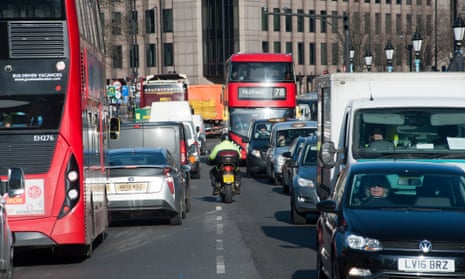One in five Europeans are exposed to harmful levels of noise pollution, and this number is set to rise in the next decade, with road traffic the biggest culprit, a new study has shown.
Excessive noise can cause physical and mental illness, and is associated with higher levels of heart disease, stress and sleeplessness. About 12,000 premature deaths are caused by noise in Europe each year, according to the European Environment Agency (EEA), while noise contributes to about 48,000 cases of ischaemic heart disease.
Wildlife is also affected: a study last year showed noise hampers birds’ ability to communicate, and can stop them from mating.
The EEA, Europe’s environmental watchdog, warned in a report on Thursday that more people were likely to be affected by harmful noise levels in future, as the result of increasing urbanisation and mobility.
Across Europe, an estimated 113 million people are affected by road traffic noise levels above 55 decibels, the threshold at which noise becomes harmful to human health by the World Health Organization’s definition.
In addition, 22 million people are exposed to high levels of railway noise and 4 million people to high levels of aircraft noise. At least 12,500 European schoolchildren are estimated to suffer learning impairment because of aircraft noise. Other noisy industries affect about a million people across the continent.
In the UK, more than 18% of the urban population were estimated to be exposed to harmful noise levels, the great majority of those (14.5%) by road traffic alone. About 7% of people living outside urban areas were exposed to detrimental noise, nearly all of those by road traffic.
There are many ways to reduce noise. Electric vehicles are quieter than diesel and petrol-driven cars.
Like electric vehicles, walking and cycling reduce greenhouse gas emissions at the same time as lowering the decibels. Roads can be resurfaced with smoother asphalt, traffic management can also help, and reducing speed limits works in urban areas.
Town planners can also ensure there are quiet areas, such as parks or other green spaces.
The EEA said it was hampered in its research by EU member states failing to supply the data required by the EU noise directive, even though the deadline was 2017. Nearly a third of the data required was not available. The EEA said this showed that countries were not taking the steps needed to address the noise problem.
A spokesperson for the UK government said: “We are committed to ensuring that noise pollution is managed effectively in order to promote good health and quality of life. We have strong protections in place to avoid significant noise impacts in our planning system, environmental permitting systems, in vehicle and product standards and noise abatement legislation.”
